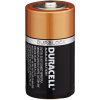Zerogee
Clencher's Bogleman
There have been several threads recently about cleaning rail ends for tracklaying, all very interesting, and there seems to be a general consensus about using a drop of graphite paste, copper slip or similar when using fishplates for rail joining.... but do folks here still use it when replacing the fishplates with clamps?
Specifically Massoth type clamps in my case, but comments on others (Hillman type, Splitjaw etc, and Aristo track screws) are equally welcome....
Does some paste still help with maintaining good continuity even when you're getting a tight physical connection via the clamp?
Jon.
Specifically Massoth type clamps in my case, but comments on others (Hillman type, Splitjaw etc, and Aristo track screws) are equally welcome....
Does some paste still help with maintaining good continuity even when you're getting a tight physical connection via the clamp?
Jon.

